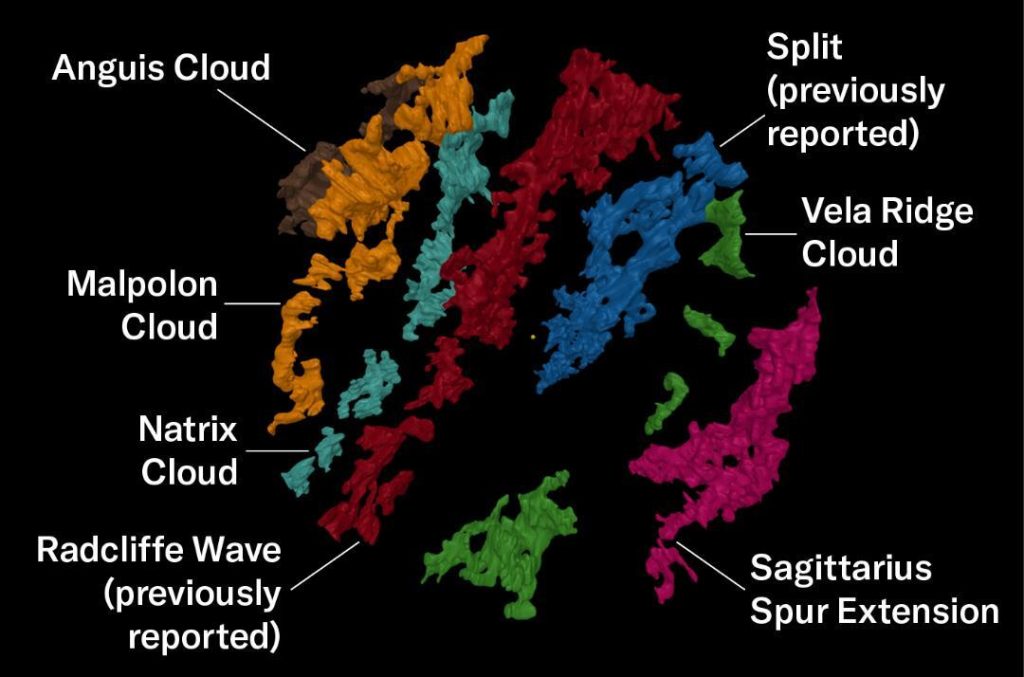
5 Superclouds Discovered Near Our Solar System
The vast expanse of space that surrounds our solar system has long been a subject of fascination and exploration. Recently, a team of astronomers has made a groundbreaking discovery that sheds new light on the mysteries of the cosmos. According to a study published in the online archive arXiv, five massive superclouds have been discovered just beyond the solar system, bringing the total number of these giant gas formations to seven.
Located nearly parallel to each other, these superclouds are characterized by their wave-like patterns and enormous size. They range in length from 3,000 to 8,000 light-years, and their masses are estimated to be between 800,000 and 3.5 million times that of the Sun. This makes them the largest known neighbors of our galaxy.
The discovery of these superclouds is a significant breakthrough in our understanding of the structure and evolution of the universe. Superclouds are enormous clouds of gas and dust that can stretch for thousands of light-years and contain massive amounts of material. They are thought to play a crucial role in the formation of stars and planets, and can even influence the development of galaxies themselves.
The study, which was published under the title “A Galactic-scale Molecular Cloud Complex in the Perseus-Taurus-Pisces Molecular Ring,” provides a detailed analysis of the five new superclouds and their properties. The researchers used a combination of observations from radio telescopes and computer simulations to identify and characterize the clouds.
According to the study, the five new superclouds are located in the Perseus-Taurus-Pisces molecular ring, a region of the galaxy that is known for its high levels of star formation activity. The clouds are thought to be the result of a combination of gravitational collapse and the formation of new stars and planets.
The discovery of these superclouds is significant not only because of their size and mass, but also because they provide a unique opportunity to study the formation and evolution of the universe. By studying these clouds, scientists can gain insights into the processes that shape the universe and the role that superclouds play in the formation of stars and planets.
The study’s findings have important implications for our understanding of the universe and its evolution. The discovery of these superclouds suggests that the universe is much more complex and dynamic than previously thought, and that there may be many more of these giant gas formations waiting to be discovered.
In conclusion, the discovery of five new superclouds near our solar system is a significant breakthrough in our understanding of the universe. These enormous clouds of gas and dust are thought to play a crucial role in the formation of stars and planets, and can even influence the development of galaxies themselves. The study’s findings provide a new window into the mysteries of the cosmos, and suggest that there may be many more of these giant gas formations waiting to be discovered.
Source:
https://arxiv.org/abs/2507.14883






